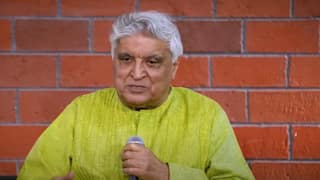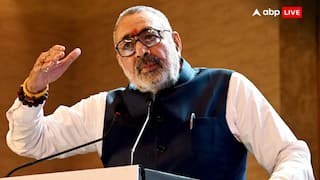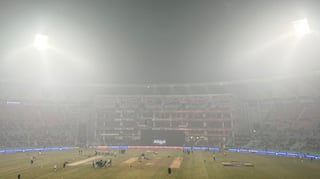Opinion: 1999 Super Cyclone Vs Cyclone Dana — A Tale Of 2 Catastrophes & How Odisha Aced A Bitter Lesson

When the 1999 super cyclone struck Odisha, on October 29, the destruction that followed left the state reeling. More than 10,000 people were killed in what remains one of India’s most brutal trysts with natural disasters.
In 2024, the state found itself bracing for another cyclone — Dana — just ahead of the 25th anniversary of the super cyclone. The days since stand testament to just how far Odisha has come in the past two-and-a-half decades.
There was a difference in intensity between the two cyclones — and the site of landfall made a difference too — but an alert state administration has managed to achieve its ‘Zero Casualty’ mission during Dana, even as neighbouring West Bengal reported four deaths in the storm.
Apart from giant strides in technology, this was the outcome of years of planning and training by a state that resolved to never get caught off-guard again.
Two Years, Two Storms
The 1999 storm was a Category-5 cyclone that made landfall at Ersama in Jagatsinghpur district with a wind speed of 260 km per hour. The sea came 20 km inside Jagatsinghpur district. The lack of an early warning system and no preparedness heightened the disaster’s impact.
Meanwhile, Cyclone Dana — a Category-3 cyclone — made landfall on the intervening night of October 24 and 25 between Odisha’s Bhitarkanika wildlife sanctuary and Dhamra Port, with a wind speed of 110 to 120 km per hour. The rise of sea level during Dana was not at the same scale, and the 2000-sqkm mangrove ecosystem in Bhitarkanika helped tame the storm to an extent. As Cyclone Dana moved inland, it encountered increased land friction and lost access to the warm waters of the Bay of Bengal and, as a result, lost its intensity.
During the 1999 super cyclone, for weeks together, there was no trace of the administration. For days on end, no coordination took place between the Office of the Special Relief Commissioner (SRC), which was then based in Cuttack, and the State Secretariat in Bhubaneswar.
An inept state government, led by the then Chief Minister Giridhar Gamang, abysmally failed to handle the crisis. The then chief secretary Sudhansu Bhusan Mishra chose to fly down to the US, leaving the cyclone-ravaged state to its fate. The then SRC D.N. Padhi was accused of irregularities in the purchase of polythene sheets meant for cyclone victims.
As soon as the 1999 super cyclone struck Odisha, the central government led by the then Prime Minister Atal Bihari Vajpayee tried to reach out to the state with an offer to help. But a lack of coordination from the then Odisha government is said to have made central intervention difficult until the Centre declared the super cyclone a national calamity and deployed the armed forces besides carrying out other relief and rehabilitation work.
Community Participation And Outreach
Cut to the present, Odisha is almost a different state from what it was in 1999, with its cyclone preparedness bolstered significantly.
In response to the 1999 super cyclone, the Odisha State Disaster Management Authority (OSDMA) was established the same year. The OSDMA was created even before the National Disaster Management Authority (NDMA) was formed in 2001 and well ahead of the passage of the Disaster Management Act by Parliament in 2005.
Odisha has been able to develop robust disaster resilience with a focus on developing infrastructure, technology and skilled manpower.
During the 1999 super cyclone, Odisha only had 23 permanent cyclone shelters — constructed by the Indian Red Cross Society — with a capacity to accommodate roughly 30,000 people. Today, the state has an extensive network of 870 multi-purpose cyclone shelters along its 480-kilometre coastline, with each shelter capable of housing up to 1,000 people.
As many as 450 cyclone shelters have maintenance committees that involve trained local youth in key disaster response activities, such as disseminating cyclone warnings, providing first aid to victims, and assisting in rescue and relief efforts. The network of these cyclone shelters enables the state to actively engage the entire community in disaster management, fostering a resilient and responsive system.
In fact, community participation and outreach are the defining elements of Odisha’s disaster management model. This approach ensures the rapid dissemination of cyclone warnings and efficient mobilisation of residents in targeted areas, facilitating timely evacuations.
As part of its disaster preparedness strategy, Odisha has also implemented a comprehensive early warning dissemination system (EWDS) with last-mile connectivity. This mechanism allows the state to activate sirens from 122 towers along its coastline, providing instant alerts to vulnerable communities at the press of a button.
Since the 1999 super cyclone, India has made substantial advancements in weather science and meteorological forecasting. With enhanced satellite technology and supercomputing capabilities, the India Meteorological Department (IMD) now provides more precise, accurate, and timely predictions regarding cyclones and their landfall.
IMD Director General Dr Mrutyunjay Mohapatra, widely recognised as the ‘Cyclone Man of India’, has played a crucial role in transforming the IMD into a world-class forecasting agency.
As soon as the IMD issued an alert about Cyclone Dana, the Odisha government wasted no time in getting into action. Six senior IAS officers, all with previous experience in cyclone management as collectors, were assigned to vulnerable districts to assist the local administration. Nine ministers were deployed to oversee cyclone management efforts across as many districts, ensuring a coordinated response to the impending threat.
A total of 19 National Disaster Response Force (NDRF) teams, 51 Odisha Disaster Rapid Action Force (ODRAF) teams, 95 Odisha Forest Development Corporation (OFDC) teams, and 220 Odisha Fire Service teams were deployed to assist with cyclone relief efforts well in advance.
About 6 lakh people were evacuated and taken to cyclone shelters. Around 6,000 pregnant women were shifted to healthcare centres, with 1,600 delivering their babies safely during the cyclone. In an unprecedented move, livestock in the cyclone-affected districts was also evacuated. If there was no loss of human life, there were no livestock casualties either.
Chief Minister Mohan Majhi closely monitored Cyclone Dana’s progress in real-time to ensure a swift response. Revenue and Disaster Management Minister Suresh Pujari actively led on-the-ground relief efforts, while Chief Secretary Manoj Ahuja and SRC Deo Ranjan Singh remained fully engaged, overseeing emergency measures and efficient relief distribution.
The central government also maintained regular communication with the state and extended full support and cooperation.
The result of all this is out there for all to see.
Saswat Panigrahi is a senior multimedia journalist.
[Disclaimer: The opinions, beliefs, and views expressed by the various authors and forum participants on this website are personal and do not reflect the opinions, beliefs, and views of ABP News Network Pvt Ltd.]


























